Everything you need to know for successful rose cuttings
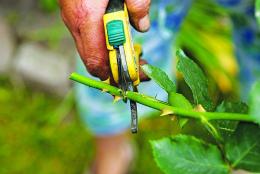
Roses are whimsical and delicate plants, but armed with the necessary knowledge about how to propagate and grow them, it is easy to realize any fantasy: plant a rose garden from your favorite varieties and even plant a rose that is hard for your heart to part with.
The article describes in detail the method of propagating roses by cuttings. Gardeners consider it more successful and effective compared to grafting. In addition, you can root pink cuttings regardless of the time of year: in winter, a decanter of water or a regular pot of soil is suitable for this purpose.
Content:
How to prepare herbaceous summer cuttings
Propagation of roses by cuttings is more suitable for climbing, polyana and hybrid-polian varieties.
Summer cuttings are desirable for propagation. Roses, like other woody plants, take root better when the cuttings are still young and soft. It is better to start breeding at the moment when the buds begin to fill, just before flowering begins - at this time the shoot begins to become lignified. In terms of timing, this period falls on the first two summer months and depends on the type of climate and the chosen variety of roses.
At sorting cuttings preference should be given to relatively thin branches. The cuttings are cut into three buds in order to obtain full-blooded plants that tolerate cold well within a year.
Preparation of cuttings:
- The cutting is cut obliquely directly under the bud, at a distance of 2 mm.
- The upper cut is made straight 10 mm above the kidney.
- To prevent the shoots from drying out, remove excess leaves from below and shorten the top ones by 1/3.
- Remove the thorns.
- In order for the cuttings to take root, they are tied and dipped in water or a special solution.
- Root embryos in the form of white balls appear after 2-3 weeks. All this time, every 2-3 days it is necessary to change the water under the cuttings. The water should be boiled and cooled to room temperature.
After the root embryos appear, you can leave the cuttings in water for further root growth, or you can immediately transplant them into soil or a pot of soil. It is more advisable to plant the cuttings in prepared soil, since a long stay of the roots in water deprives the plant of oxygen - the roots will soon begin to rot.
Planting summer cuttings in open ground
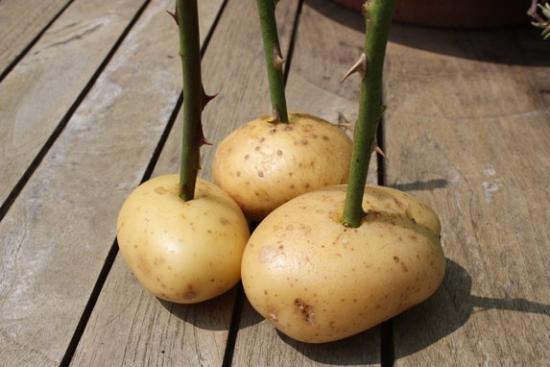
Before replanting cuttings for further rooting in pots, they are treated with a manganese solution. Drainage or pebbles are placed at the bottom of the pots. The middle of the pot, the place where the plant's root system will develop, should be filled with turf soil or special soil for roses. On top, a 3-finger layer of turf is covered with fine river sand.
The cutting is placed in the sand so that it does not touch the turf with the lower cut, otherwise it may die. Gardeners recommend planting each cutting separately.
If you plan to plant several cuttings at once in one box, you must maintain a gap of at least 8 cm between them.
Caring for planted summer cuttings
The planted rose cuttings are covered with plastic bottles, after being irrigated with water.The seedlings are placed in a warm room, away from direct sunlight. The room temperature should be maintained between 23 and 25 degrees. To maintain the required level of humidity, the bottles are periodically removed and the plants are sprayed with water, and they also make sure that the soil in the pots does not dry out.
Period rooting pink cuttings depends on many factors, including the variety of roses. On average, successful rooting can be judged within a month after planting. At this time, you can begin to remove plastic bottles, giving young plants the opportunity to harden in the fresh air.
In the first year after propagation, it is not recommended to leave plants to overwinter in open space. During the period of cold weather, the seedlings are again placed indoors and the necessary humidity is maintained, and only in the spring of next year, with the onset of warm weather, they are planted in a flower garden in open ground.
The described method of growing roses is quite labor-intensive, but the experience gained as a result of such cultivation will be useful for a long time.
Autumn cuttings
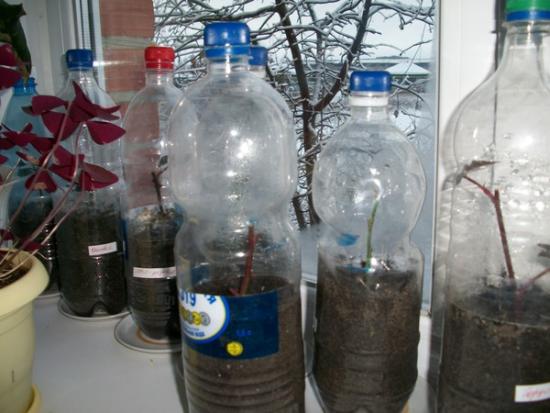
Roses can also be propagated in the fall. When preparing adult plants for wintering, the tops of the shoots are cut off. These shoots will act as future cuttings.
Methodology:
- The shoots on the mother plant should be no thicker than a pencil - this will ensure good survival rate for the cuttings.
- Tools that will be used to make cuts must first be sharpened and disinfected with an alcohol solution and boiling water.
- Cuttings are selected with 3-5 developed buds.
- Shoot cuts should be made straight from above and oblique from below.
- The leaves provide oxygen to the cuttings.If the plant is planned to be planted soon, there is no need to pick off the leaves.
- It is preferable to plant the cuttings in a permanent place so that they do not have to take root twice.
- The cutting is planted so that it is located at an angle of 45% to the ground surface. A third of the cutting should remain above the ground.
- The planted plant is covered on top with a cut plastic bottle, in which holes must be made for ventilation. If a harsh winter is expected, the bottle must be sprinkled with leaves or covered with lutrasil.
Overwintering cuttings in soil
To successfully overwinter the cuttings in the soil, you need to make a hole 15 cm deep, the bottom of which is covered with a piece of cotton cloth. To make it easy to find the cuttings in the spring, the planting site is fenced off with small pegs. Leaves from the cuttings must be cut and placed evenly on the bottom of the hole. After laying out, the branches are covered with a cloth and sprinkled with soil.
Cuttings of different varieties Roses are marked with multi-colored ribbons to avoid confusion.
In the spring, when the soil thaws, overwintering places for the cuttings are found by following the pegs. A successfully overwintered cutting will have a thick growth - a sign of suitability for planting.
Now everything is ready for planting in open ground or cuttings. For some time, you can place the cuttings in a humid environment and add the growth stimulator Epin. Cellophane bags with holes for air circulation will help planted young plants maintain the necessary humidity. In this form, the cuttings can be transported.
Watch the video for the intricacies of rose cuttings:
Interesting information about the vegetable garden

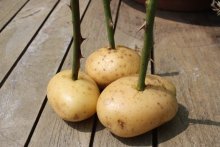



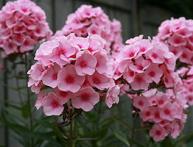

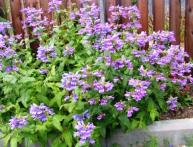



Comments
Wow, so many subtleties of rosette propagation! I also often tried to propagate rose bushes with cuttings, but, alas, not all of them took root.